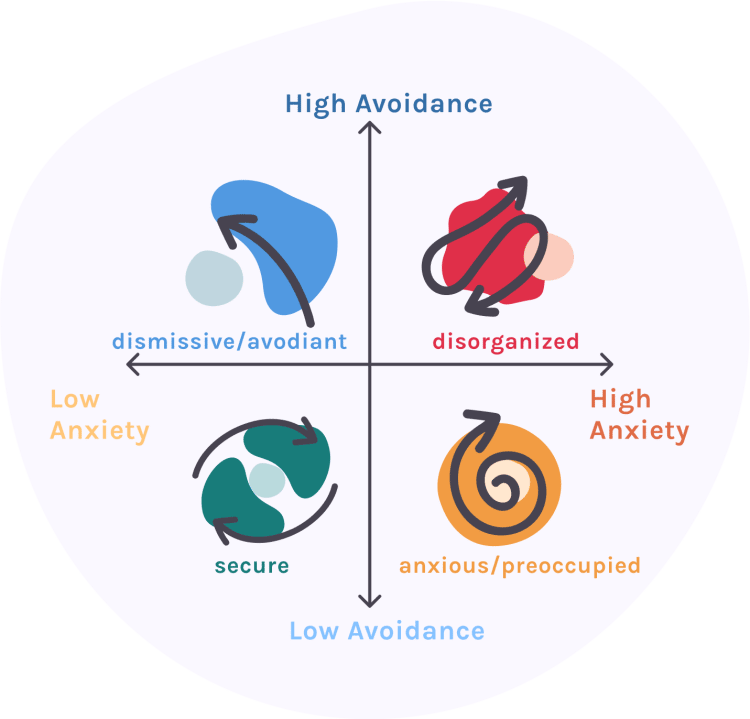Attachment Styles

Attachment Styles
Definition
Attachment styles are patterns of emotional and behavioral responses. Individuals develop these styles in early childhood as a result of their interactions with caregivers. These styles reflect the quality of the emotional bond that develops between the child and their primary caregiver. It also has a profound impact on an individual’s emotional and social development throughout life. The styles are divided in many categories. Each one of them is characterized by specific behaviors and emotional responses in relation to caregivers, as well as in later relationships.
Attachment Theory
To explain how humans form emotional bonds and attachments to others, British psychiatrist and psychoanalyst John Bowlby developed the Attachment Theory. He observed infants that were separated from their primary caregiver and placed in hospital or foster care settings during World War II. Then, he formed his vision on the importance of early relationships in shaping later emotional development.
Later, researchers in the field used the theory to explain a range of psychological phenomena, including the development of personality, social and emotional functioning, and mental health. They also developed attachment-based interventions for individuals with attachment-related problems, such as insecure attachment or attachment disorders.

Types
The four main types of attachment styles are:
Secure Attachment
Infants with secure attachment feel comfortable exploring their environment and seek comfort and reassurance from their caregiver when they encounter something unfamiliar or distressing. They trust that their caregiver will be responsive and available when they need them, and they use their caregiver as a secure base from which to explore.
Avoidant Attachment
Infants with avoidant attachment tend to avoid or ignore their caregiver when they are distressed or upset. They may appear emotionally distant and may not seek comfort from their caregiver, preferring to cope with their distress on their own. These infants may have learned to suppress their emotions in response to inconsistent or unresponsive caregiving.
Ambivalent Attachment
Infants with ambivalent or anxious attachment are often clingy and dependent on their caregiver, and may become extremely upset when their caregiver leaves. However, when their caregiver returns, they may simultaneously seek comfort from and reject their caregiver, exhibiting conflicting behaviors. These infants may have learned to be anxious about their caregiver’s responsiveness due to inconsistent caregiving.
Disorganized Attachment
Infants with disorganized attachment exhibit a range of confusing or contradictory behaviors in response to their caregiver. For example, they may approach their caregiver while looking away or may show signs of fear or apprehension when being held by their caregiver. Disorganized attachment often results from inconsistent, abusive, or neglectful caregiving.
Enhance the Style
Some of the strategies that help improving attachment style include:
- Seeking therapy,
- Working on self-awareness,
- Cultivating healthy relationships,
- Addressing past traumas.
Summary
Understanding attachment styles is crucial in building healthy and fulfilling relationships throughout life. However, it is important to note that the styles are not fixed and can be influenced by experiences and relationships later in life. Therefore, with time and effort, individuals can develop healthier attachment styles and enjoy more fulfilling relationships.
Contact Dr Carla to keep your mental health in check.

